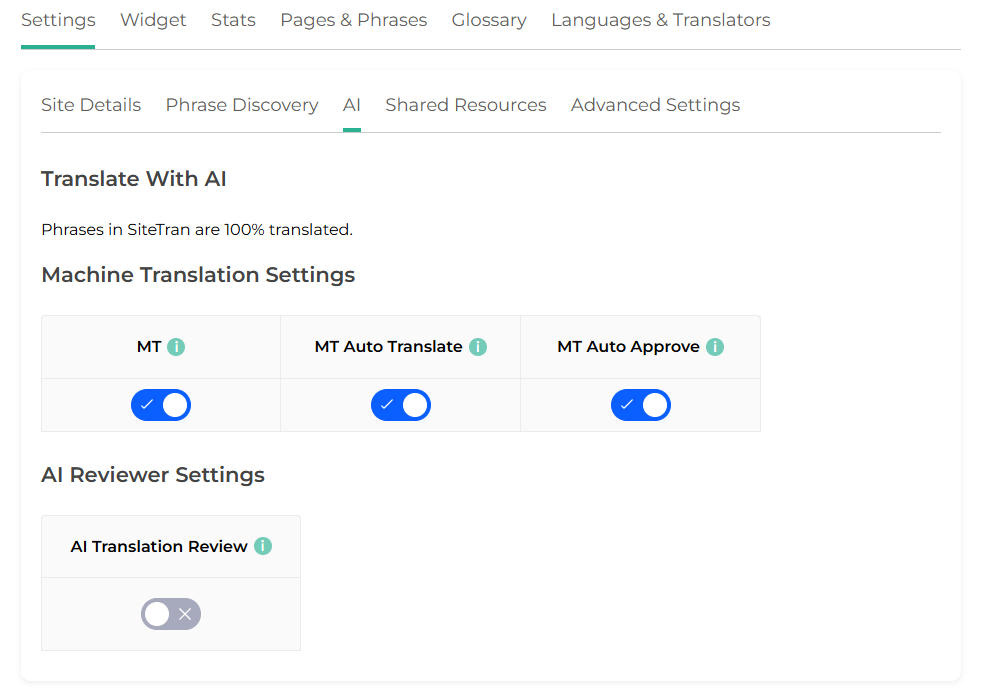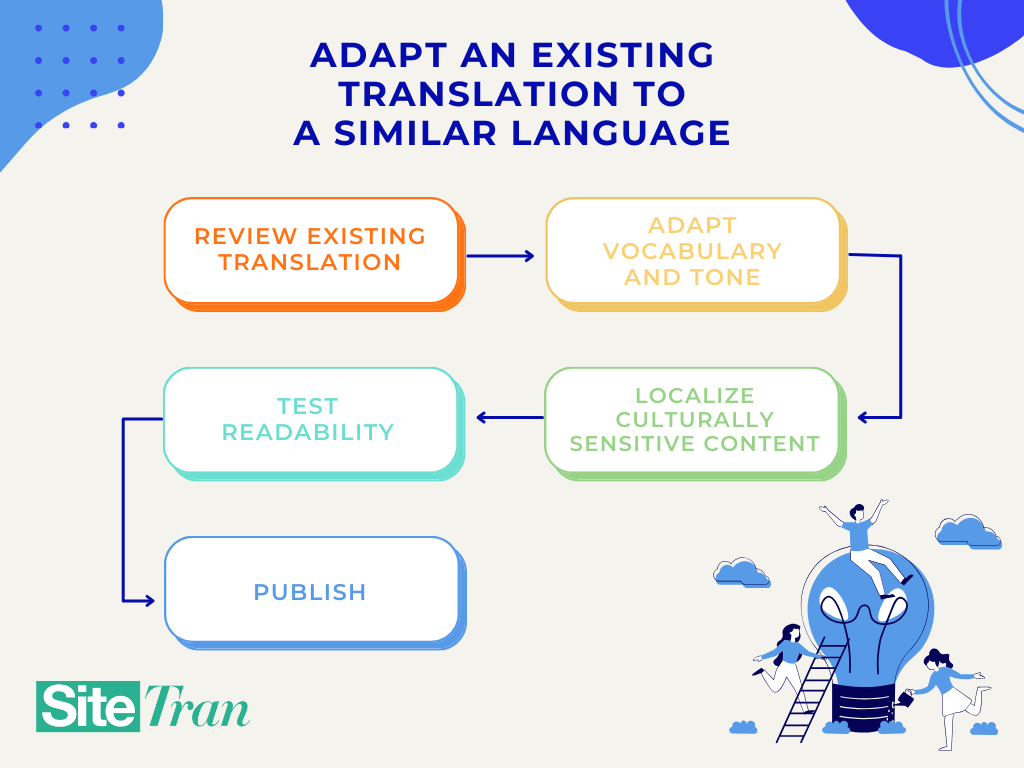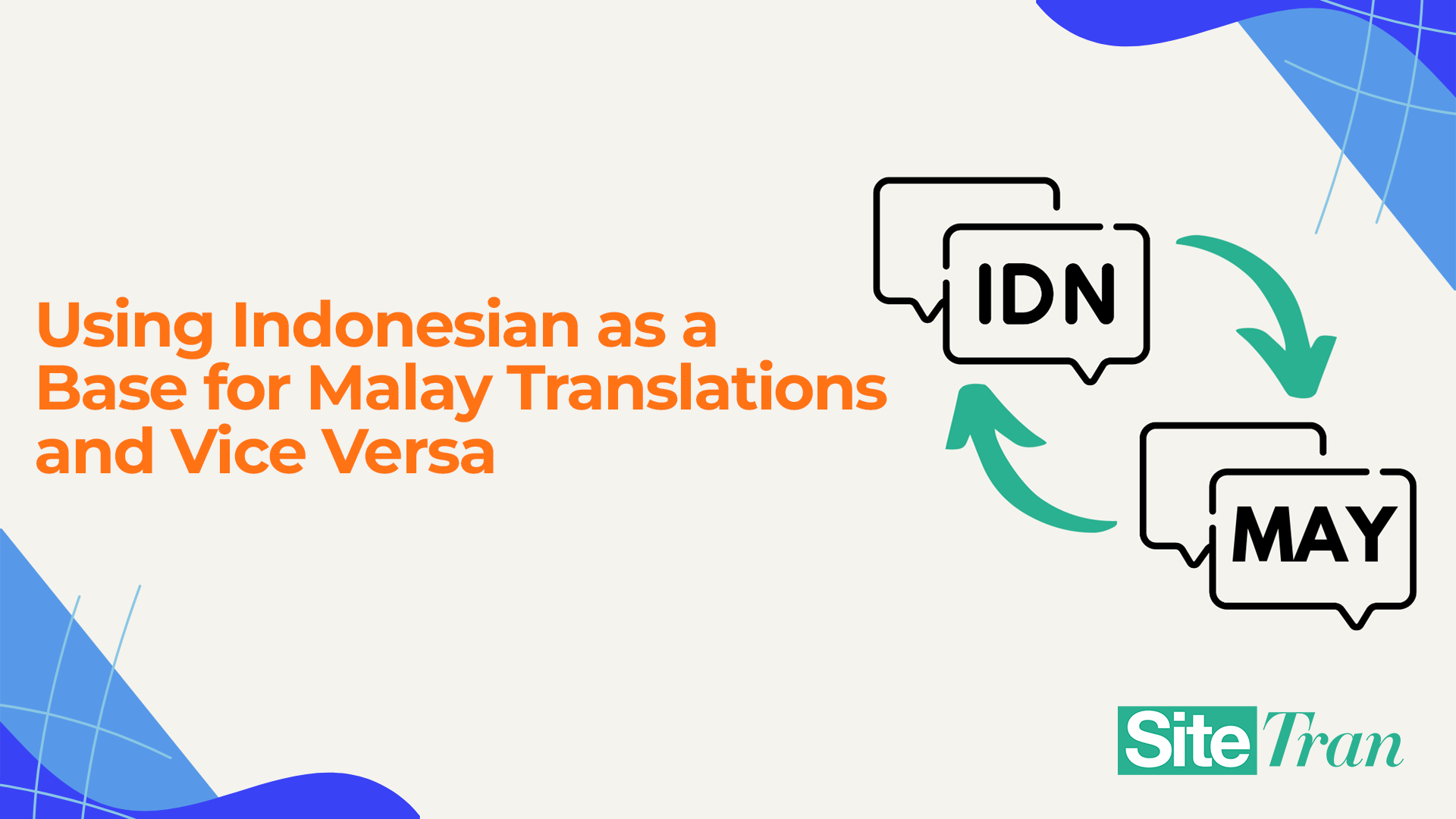Indonesian and Malay: Can You Use an Indonesian Translation as a Base for Malay, and Vice Versa?
Introduction: Expanding Across Southeast Asia with Indonesian and Malay
As a business expanding into Southeast Asia, you’ll quickly encounter the similarities between Indonesian and Malay. The languages are so close that speakers often understand each other, especially in informal contexts. But as similar as they are, Indonesian and Malay have diverged enough in vocabulary, tone, and cultural nuances to require careful adaptation for localized content. This post explores how you can adapt existing content from one language to the other, when a unique translation is needed, and how a translation tool like SiteTran can help simplify the process of reaching both Indonesian and Malay-speaking audiences.
1. Understanding the Similarities and Differences Between Indonesian and Malay
Mutual Intelligibility
Indonesian and Malay are highly similar languages, often mutually intelligible to native speakers. This mutual understanding stems from shared roots and historical linguistic ties. A Malaysian reader can often understand an Indonesian text and vice versa, making adaptation a viable option in many cases.
Pronunciation and Formality
The main differences arise in pronunciation and tone. Malay spoken in Malaysia tends to use softer, rounded sounds, while Indonesian has a crisper and more direct pronunciation. Additionally, Indonesian leans toward a more casual tone in both spoken and written forms, while Malay can feel slightly more formal, especially in government or business contexts. The good news is, this doesn’t affect text translation!
Vocabulary Variations
While the two languages share a lot of vocabulary, they also have significant differences, with each language borrowing terms from different sources:
- Influences: Malay includes more words derived from Arabic and Sanskrit, while Indonesian has been influenced by Dutch vocabulary due to colonial history.
- False Friends: Some words are identical in spelling but have different meanings. For example:
- “Percuma” means “free of charge” in Indonesian but “useless” in Malay.
- “Bisa” means “can” or “able to” in Indonesian, but it translates as “poison” in Malay.
Direction for Websites
Both languages are written left-to-right, so no structural changes are necessary for website layout. However, small vocabulary and phrasing differences are essential for creating content that feels natural to each audience. A translator familiar with both languages can often leverage existing content with minimal changes, avoiding the need to start from scratch.
2. Translation Shortcuts: Can You Leverage Existing Translations?
The high mutual intelligibility between Indonesian and Malay makes it possible to adapt existing translations, especially for general or technical content.
For technical or factual content, such as product descriptions, legal disclaimers, and support articles, an Indonesian translation can often be used as a base for Malay, with adjustments in vocabulary. A skilled translator can make subtle changes in phrasing and terminology to create content that feels authentic for Malay readers, and vice versa.
For marketing or culturally sensitive materials, a more tailored approach is typically required. Different terms or phrases may resonate differently due to cultural associations or unique language preferences. For example:
- An Indonesian ad that uses mantap (a casual word for “excellent”) may not have the same effect in Malay, where a more formal phrase like hebat (great) might be preferable.
3. Cost-Benefit Analysis: When to Invest in Separate Translations
To decide when to adapt or fully translate content, it’s important to consider the content’s purpose and target audience:
- General Information or Technical Content: For product descriptions, FAQ sections, and technical documentation, an adaptation usually works well. A translator can adjust vocabulary and phrasing, ensuring the content is both accurate and accessible to each audience.
- Marketing, Cultural, or Conversational Content: For content that conveys brand identity or appeals to emotions—such as About Us pages, advertisements, or social media posts—a unique translation may better capture each audience’s expectations and preferences. Malay and Indonesian speakers may have different associations with words or phrases, and a dedicated translation ensures that your brand message comes across authentically.
Example Scenario: Imagine you’re managing a travel website serving both Indonesia and Malaysia. Your FAQ and itinerary sections could likely be adapted from Indonesian to Malay with minimal changes in terminology. However, a section that describes travel experiences or cultural landmarks might require unique translations to resonate better with each audience’s cultural context.

4. Streamline Your Process with a Website Translation Tool Like SiteTran
A translation tool like SiteTran is invaluable when adapting between similar languages, providing a streamlined process that saves time while ensuring accuracy and quality. Here’s how SiteTran can help:
- Efficient Management and Communication: SiteTran’s centralized platform lets you manage all projects in one place, making it easy to coordinate between Indonesian and Malay translations, keep track of changes, and communicate with translators.
- Glossary for Consistency: SiteTran’s glossary feature allows your team to define key terminology to ensure consistency across languages, which is especially helpful for terms with slightly different meanings in Indonesian and Malay.
- AI-Powered Translation Suggestions: SiteTran’s AI suggestions provide a useful starting point for translators. Given the languages’ similarities, these suggestions can make the adaptation process more efficient while leaving room for necessary adjustments.
- Translation History: SiteTran’s history feature allows you to access past translations, making it easy to maintain continuity in style and phrasing across multiple languages, which is especially useful when dealing with closely related languages.
Using SiteTran simplifies the process of managing translations between Indonesian and Malay, allowing you to efficiently adapt content without sacrificing cultural accuracy.

5. Best Practices for Businesses Targeting Indonesian and Malay Speakers
Here are some practical tips to help you adapt content between Indonesian and Malay effectively:
- Adapt, Don’t Just Translate: Ensure that each adaptation feels natural to native readers. Small vocabulary adjustments can make content feel more authentic.
- Prioritize Key Content: Focus on adapting essential pages first, such as your homepage, About Us page, and main product or service descriptions.
- Test for Readability: Conduct A/B testing or use feedback from native speakers to ensure that the content is accessible and engaging for both Indonesian and Malay audiences.
Conclusion: Make the Most of Indonesian and Malay Translations
Expanding your reach to both Indonesian and Malay-speaking audiences can be an efficient process thanks to the similarities between these languages. While shared vocabulary and grammar make it possible to adapt content between the two, regional differences in tone, vocabulary, and cultural associations mean that a one-size-fits-all approach isn’t always ideal.
With a translation tool like SiteTran, you can easily manage and adapt translations, making it possible to serve both Indonesian and Malay speakers with content that feels natural and relevant. SiteTran’s glossary, translation history, and AI-powered suggestions streamline the adaptation process, ensuring that your content resonates authentically with both audiences.
By strategically adapting content for Indonesian and Malay, you can expand your brand’s presence in Southeast Asia, creating a localized experience that strengthens user engagement and trust.

